I’m not joking when I tell you that the hardest part of this renovation project has been deciding what paint to use on our woodwork. We’ve got a lot of wood, both in the old part of the house and in the new extension:

Bathroom cabinets, which I know I shouldn’t paint because they’re oak, but I can’t live with that ’70s look
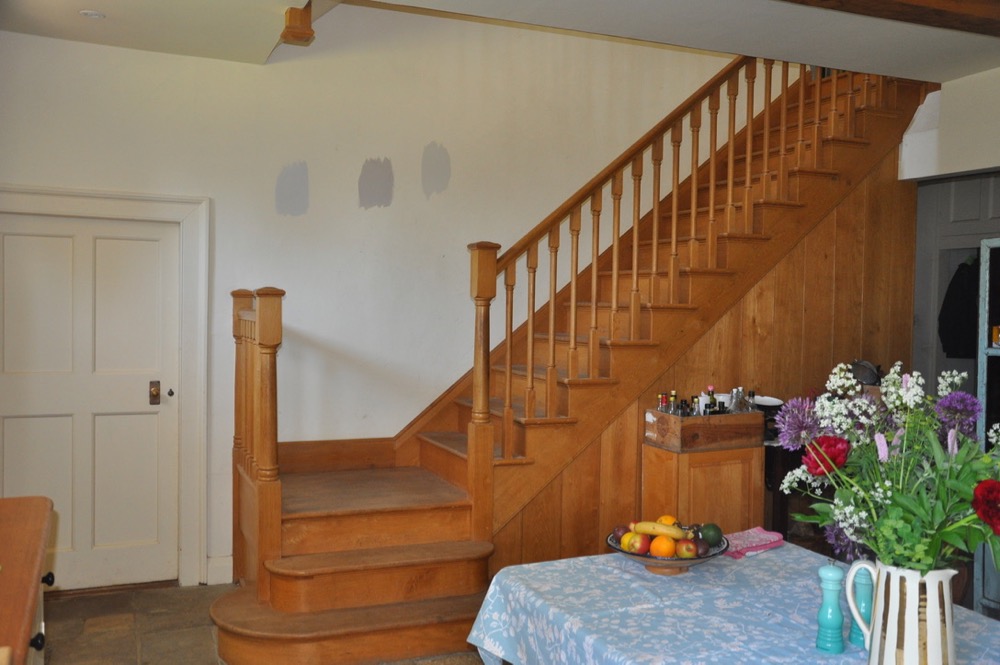
A staircase where the varnish has turned it orange

New ply and softwood kitchen units
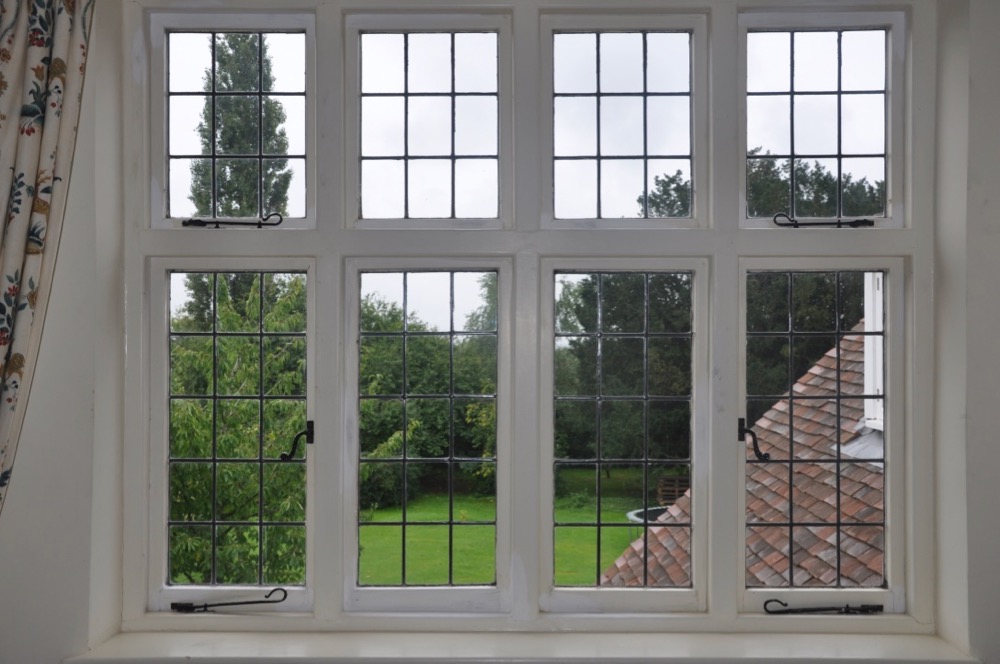
And lots of old windows…..

…some with shutters which get bashed around alot.
So what’s the problem?
Why can’t I just use a water-based eggshell and be done with it? The thing is I’ve done that and 6 months later it’s started to scratch and chip. For ages I thought it was my decorator’s fault; then I blamed the children; then I blamed myself for picking the wrong paint. But THEN I read Karen Knox’s post “What’s going on with paint” and I realised that this is a problem faced by lots of people but it gets swept under the carpet.
What happened to traditional oil-based paints – the ones that smell and make you feel light-headed?
Paints have become more environmentally friendly. Back in 2010 an EU directive heavily restricted the use of solvents (or VOCs) in paints. Solvents are needed in paints, particularly oil-based ones, to make them dry quickly and flow properly but they are very bad for our health and the planet. What resulted was a mass movement away from oil-based to water-based paints because they require much lower levels of VOC. Farrow & Ball produce no oil-based paints now at all. Surely, you’re thinking, this must be a good thing. And yes, it is because it means we have fewer harmful substances off-gasing in our homes and producing toxic waste through their production process. But, as always, there’s a downside.
In my (not very extensive) experience, water-based paints on woodwork are not as hardwearing as their oil-based equivalents. On walls they are fine but woodwork is different – it gets knocked, walked upon, slammed and it moves according to season. If I were happy to re-decorate my house every couple of years then I probably wouldn’t care too much but, being the type of person who expects everything to last at least my lifetime and possibly those of my children, I get irritated every time I discover a new chip or scratch.
In the case of unpainted, new wood there’s a possible case for arguing that water-based paints are ok IF you use a good primer and apply enough coats. But, when it comes to previously painted woodwork, they just don’t stand the test of time. Environmentally this creates a dilemma. Sustainability is about using materials that have minimal impact on the environment but it’s also about using less of them. Today’s woodwork paints last only a few years before needing to be replenished. From an environmental and economic perspective this is madness. The problem is even more acute in old houses which suffer from condensation – windows I painted just 2 years ago need re-painting again now.
So what’s the solution?
I have been on a mission to find a paint for my woodwork that stands the test of time and is environmentally friendly. Don’t get too excited though because I haven’t found the perfect solution but I definitely understand the issues a bit better!
Go old-school. It is still possible to buy oil-based paints. Little Greene make a number of oil-based paints including Traditional Oil Gloss and Flat Oil Eggshell. These are marketed as being environmentally-friendly because they use naturally occurring vegetable oils but, make no mistake, they contain high levels of chemical solvents which are far from eco. In their defence though the solvent levels are within EU regulations and under the French indoor air quality test their paints achieve an A+. Dulux Trade also produce an oil-based Satinwood.
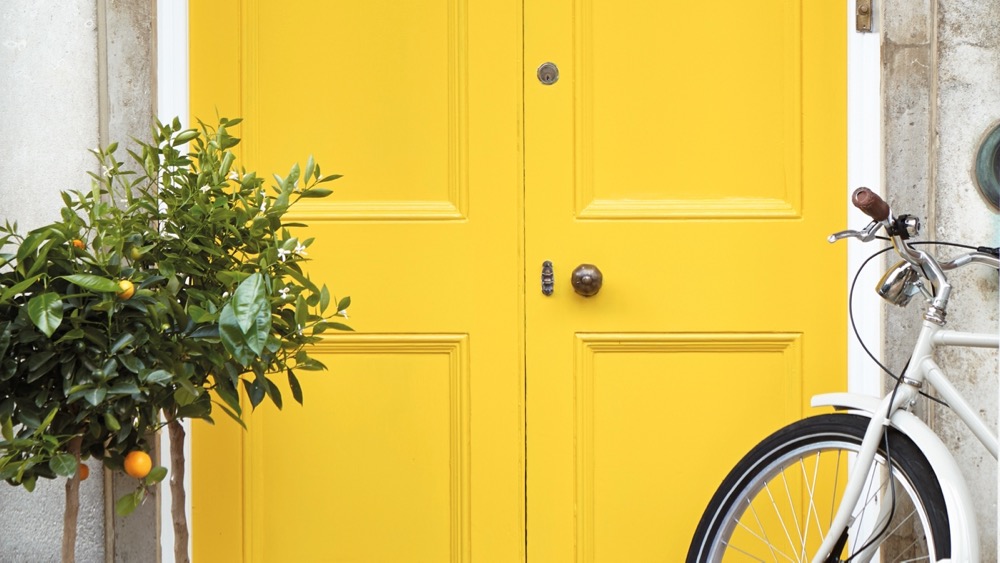
Little Green Traditional Oil Gloss for both interiors and exteriors – photo by Little Greene
I’m not advocating these paints as an eco option but if used in small doses (on woodwork) and considering how much longer they last then they shouldn’t be discounted, especially for high-traffic areas. One other thing is that if you’re using these oil-based paints in white then in dark corners of a room or behind furniture (i.e. where UV light doesn’t reach) they may discolour over time.
Use a water-based eggshell and apply Polyvine Heavy Duty wood varnish on top. This was suggested to me by the technical people at Little Greene as something they had heard decorators do to make their Intelligent Eggshell (which is water-based with very low VOC levels) even more durable. Again, this might not be the most environmentally-friendly option because Polyvine varnish contains polymers (basically plastics) and chemical binders but it contains minimal solvents and will keep your woodwork chip-free for longer.
Bear with me because the next two options are the ones I’m keen to tell you about because hopefully they tick both the durability and eco-friendly boxes.
Use Auro or Edward Bulmer paints for wood. These two paint brands are first-class in terms of their environmental/health credentials. They are manufactured in the same factory using the same ingredients but Edward Bulmer is marketed as a designer paint whilst Auro has more of a ‘no frills’ image. The colour palettes are different but the base paint is the same. All their paints are made from plant oils, minerals and natural pigments and are free from petrochemicals, solvents and acrylics. For woodwork there are two options. Firstly, in the Edward Bulmer range there is the Modern Oil Eggshell which is equivalent to Auro’s 260 Satin Paint. This is a hybrid water/oil based paint that is completely free of VOCs and has a mid-sheen finish. I’ve used this on some shelves and it’s bearing up beautifully.
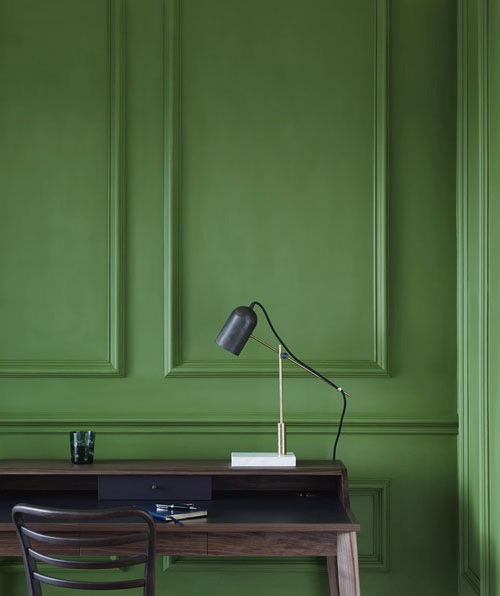
Edward Bulmer Invisible Green – photo by Edward Bulmer
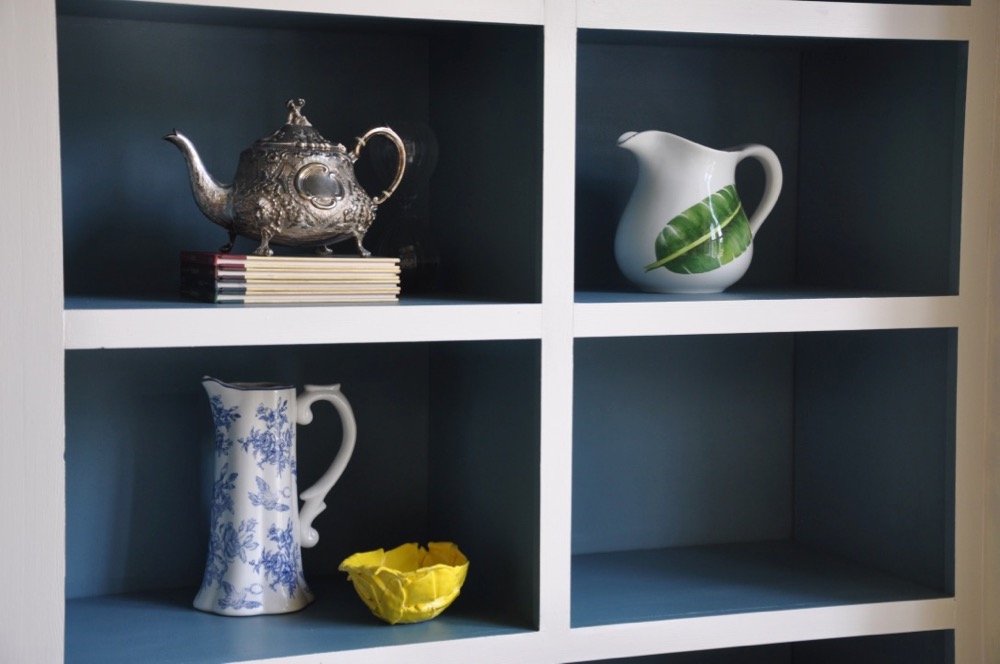
My shelves painted in Edward Bulmer Modern Oil Eggshell – Azurite Blue

Auro 260 – a water/oil hybrid for woodwork and radiators
The second option is Edward Bulmer Traditional Oil Eggshell which is equivalent to Auro 935 or 936 depending on sheen level. This is a classic oil-based woodwork paint with no nasties. It contains some naturally occurring VOCs such as those found in citrus and eucalyptus oil but is otherwise toxin free. I haven’t used this paint yet but I intend to on some utility room cabinets so I’ll report back then.

Edward Bulmer Fine Grey – photo by Edward Bulmer
The final option I want to suggest for woodwork is to use a normal matt wall emulsion but apply a water-based clear glaze on top. Earthborn produce their Wall Glaze which preserves the matt effect of the underlying emulsion but makes it more durable and washable. This enables you to create a uniform look between walls and woodwork but gives the woodwork added protection. Another option would be to use a clear wax such as Annie Sloan Soft Wax on top of a matt emulsion. Nicky Jones who is a specialist decorator uses this technique on kitchen islands and says that it is more resistent to chips and scratches than water-based eggshell.

Earthborn clear Wall Glaze

Annie Sloan Soft Wax
That’s all for now. I hope I haven’t totally confused you but basically there’s no one-size fits all approach to painting woodwork, especially if you’re trying to be eco.


Very interesting read. I own and run an eco-conscious holiday complex in Cornwall and we’ve been looking for hard wearing paints, that have minimal impact on the environment. This article has been very helpful and I will definitely look into the Auro and Edward Bulmer paints.
Hi Maria, thanks for commenting and I’m glad my blog post was of use.
Hi Lois, it’s always good to hear about another eco-paint brand so thank you. Oricalcum’s website is full of good information about using linseed oil paints and the colour options look good too. I’m always slightly hesitant about using linseed paints because of the need to strip back to bare wood beforehand but I am absolutely convinced that with the correct preparation they last far longer than petrochemical based paint and are obviously so much better for the environment.
I’m looking into ways to be eco with woodwork myself. I’ve come across guys called Oricalcum (website is linseedpaint.com) and their paint, depending on the number of layers, can be from matt to satin slightly gloss and used for plaster, wood AND metal.
I know I’m using Lakeland for my satin floorpaint (or I will be if the colour I want is available), it’s the stair stringers and skirting boards and doors that are needing to be dealt with – I may go for linseed paint, or their linseed oil that is tinted, you can get a tinted white one, so you keep the grain of the wood WITHOUT the horrible 1970s yellowness…. in theory. Not tried it yet, still doing the prep of stripping and sanding.